With its 9,289 kilometres Trans-Siberian is one of the longest railways in the world and the longest single-service railway, crossing eight different time zones. For years it’s been capturing the imagination of globetrotters, artists and train-lovers. Here’s an overview of what you should know before organizing Trans-Siberian Railway tours.
Table of Contents
The Legendary Railway
A variety of striking landscapes, cities, villages and empty fields on the way, world-famous Russian vodka and friendly passengers always ready to have a sip of it, the history and specific atmosphere, all of that makes the Trans-Siberian Railway tours a dream of numerous travelers. Countless wanderers have made their way through Russia using the railway, spending days in little compartments, listening to the rhythmical melody the train plays as it moves forward on the track, sharing stories with companions and watching the views. Some of them have not only crossed the immense Russia, but also got to Mongolia or China.
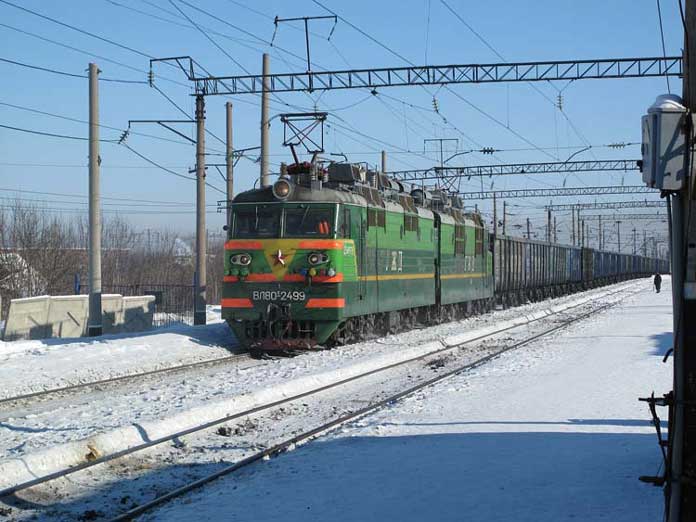 The railway’s construction started mostly for economical reasons, but soon it became a matter of national pride. After many years of planning, the building began in 1891 and continued until 1916, in the time when Russia was ruled by Tsar Alexander III. It wasn’t an easy task, builders had to deal with harsh climate, the wilderness and remoteness of taiga. The large cost was another problem, as well as the supply of man power. Many soldiers and exiled prisoners played a role of common workers. Despite the challenges, the construction was finally completed and connected Europe with the Pacific Ocean. The railway significantly influenced economical growth and improvement of the trade. It was also a turning point for Siberia, making it more accessible. The railway has continued affecting Russia’s history and it’s important till now, both in trade and tourism.
The railway’s construction started mostly for economical reasons, but soon it became a matter of national pride. After many years of planning, the building began in 1891 and continued until 1916, in the time when Russia was ruled by Tsar Alexander III. It wasn’t an easy task, builders had to deal with harsh climate, the wilderness and remoteness of taiga. The large cost was another problem, as well as the supply of man power. Many soldiers and exiled prisoners played a role of common workers. Despite the challenges, the construction was finally completed and connected Europe with the Pacific Ocean. The railway significantly influenced economical growth and improvement of the trade. It was also a turning point for Siberia, making it more accessible. The railway has continued affecting Russia’s history and it’s important till now, both in trade and tourism.
The Routes
Before you choose one from among the Trans-Siberian Railway tours, you should know there are three different routes. Check which one suits you the most and decide where to start from and where to stop.
One of the routes leads from Moscow to Vladivostok, two others, the Trans-Mongolian and the Trans-Manchurian, go to China.
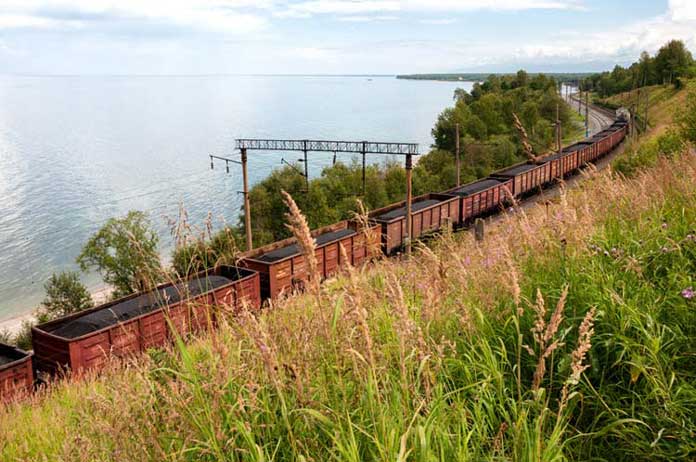
Moscow to Vladivostok
The journey from Moscow to Vladivostok is over 9000 km long and takes 7 days. Trains are usually operated by Russians. They leave Moscow every second day and before reaching Vladivostok, cross Siberia and pass the magnificent Lake Baikal. If Vladivostok is not your main destination, you can continue traveling from there and take a ferry to Japan or South Korea. Ferries run weekly, the journey takes 2 days.
Trans-Mongolian route via Ulaanbaatar in Mongolia
This route is believed to be the most interesting one. The trains, before arriving to Beijing, cross Siberia, Mongolia and Northern China, offering stunning and diversified views. If you’re interested in discovering Mongolia, that’s the best option, as you can stop there for a couple of days. The trains are Chinese operated.
Trans-Manchurian route via Harbin in China
The trains are generally Russian operated, they run weekly and take 6 days to cover nearly 9000 km. Choosing this route, you can get directly from Moscow to Beijing.
Booking Trans-Siberian Railway tours
There are several options to organize the journey. You can either buy the train tickets for the Trans-Siberian Railway tours at the station or through a travel agency.
Buying tickets at the station
That’s the cheapest, but the most risky option. Tickets usually get sold out fast, so you can’t count on a free seat. It’s especially difficult to purchase a ticket for the routes to China, since many travel-agencies pre-book them long before the date of departure. You can still give it a try if you’re flexible, especially if you’re planning to travel only within Russia and don’t mind accepting whatever seat is available.
Buying tickets through a local agency
It’s a relatively cheap options as well, but also simpler and safer. After you buy the tickets online, you can have them sent to you or pick them up at the station right before the trip. If the journey starts in Russia, you can choose a Russian agency, if in China – a Chinese one. There are also some Mongolian agencies based in Ulan Bator.
Buying tickets through an English-speaking agency
There are many agencies you can ask for help. It’s the most expensive option, but good for those who want to save time and have it all organized by someone else.
Booking the whole Trans-Siberian Railway Tour
You can also buy a full tour with a Russian or Western agency, have all the stopovers planned and accommodation booked. There are many variations: tours for single travelers, families, groups etc.
Interesting Sites on the Way
Here’s a list of several most significant cities situated along on the route and reasons why they’re worth visiting. If you’re booking a Trans-Siberian Railway tour package, make sure the places you’re most interested in are included.
Moscow
Moscow never falls asleep, it’s always bustling and lively. During the day you should visit the Kremlin and the Red Square, the center of Moscow’s history, thought and politics. That’s only the start though, because attractions of Moscow are endless. The city’s full of museums, art galleries, parks and gardens, such as the Pushkin Museum, the Gorky Park or the Tretyakov Gallery, just to name a few. At night you can go to a concert and listen to Tchaikovsky’s melodies, watch a ballet, a circus show, a theater play, or go out and enjoy Moscow’s night-life in one of the countless artsy bars, crazy clubs or vintage pubs. In case you start your Trans-Siberian journey in Moscow, don’t get on a train too soon and discover the capital of Russia before you move forward.
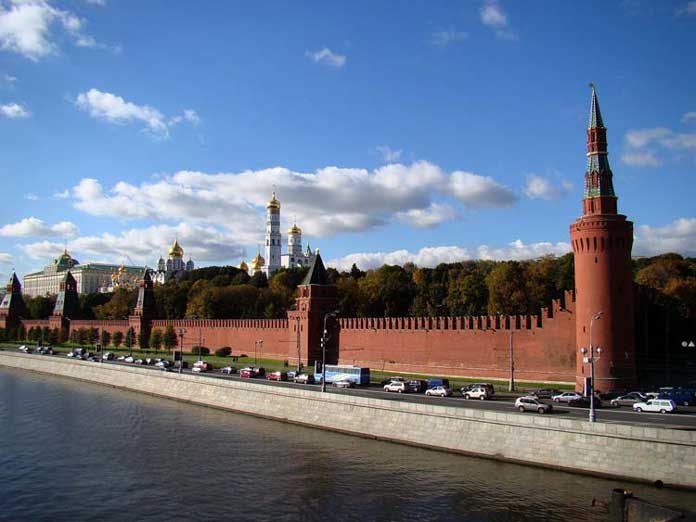
Yekaterinburg
The capital of Urals region and Russia’s 4th biggest city has a rich history and culture, so it’s nice to stop there for a little while, wander around the churches and museums and have a taste of Russian cuisine in one of the fine restaurants. Yekaterinburg is also a good starting point for exploring the Ural Mountains.
Irkutsk and the Lake Baikal
Irkutsk, with its charming, historic churches, art museums and 19th-century houses is a beautiful city and one of the most popular stops on the Trans-Siberian Railway. It’s a perfect getaway to the Lake Baikal and its wonderful surroundings. The biggest and deepest freshwater lake, Baikal with its crystal-blue water, shores covered with wild-flowers and lovely beaches, is said to be the Siberia’s greatest gem. It’s a great place to visit all year long, swimming, walking and sunbathing are perfect in the summer, driving on the ice roads (the lake gets frozen and ice is so thick cars can drive across it) and dog sledding in the winter.
Vladivostok
Museums and memorials of Vladivostok will surely intrigue history-lovers, even if its greyness doesn’t seem very attractive. It’s not a lovely town, neither it’s an easy one, but the hilly streets, numerous bays and oak woods surrounding the city, even the Soviet housing blocks, all of that gives a specific charm to Vladivostok.
Ulan Ude
Because of the proximity to Mongolia, the cultural mix, a Buddhist center located within the city and a monastery nearby, Ulan Ude feels a bit like Asia. It’s a capital of Buryat region and many of Ulan Ude’s residents are Buryats, a Siberia’s indigenous group, a subgroup of Mognols. As for the activities Ulan Ude is offering, you can take a look at its museums, go to the Buddhist temples, take a bus and reach the eastern shore of Baikal Lake. In the center of Ula Ude stands a huge, quirky statue, the World’s Largest Lenin Head. There’s also an opera, a ballet house and a puppet theatre.
Ulaanbaatar
A strange, exotic mixture of developing industry, Soviet architecture and old, mystical Buddhist temples. Gandan Monastery is a home of approximately 5000 monks and Ulaanbaatar’s main monastery. In Choijin Lama Monastery you can learn about the history of Buddhism in Mongolia and see a collection of original artworks. Since Ulaanbaatar is situated in the valley of the Tuul river and surrounded by beautiful mountains, you can also enjoy the picturesque views or go climbing. Ulaanbaatar is an obligatory stopover for all whose Trans-Siberian Railway tours include Mongolia. Its uniqueness, surprising culture and vibrant night-life won’t be disappointing.
Beijing
Beijing is a large, complex city with lots of fascinating architecture, parks, temples, palaces, great restaurants serving heavenly dishes, museums, galleries and performance art centers. During the stay in Beijing you should see at least one acrobatics show or visit the Peking Opera. Beijing’s most important attraction is the Forbidden City, a marvelous royal palace. Besides of the historic temples and palaces, Beijing has also some excellent examples of modern architecture. Outside of the city, an hour ride away, there’s the famous, legendary Great Wall of China, a definite must-see.

What to have with you
Food is available on the train, although it’s not the fanciest cuisine and consists mostly of meatballs, eggs, soups and bread. Take a chance when the train stops and buy something on the stations, in the bars or from Russian babushkas selling delights brought straight from a village. Taking lots of supplies isn’t necessary, but it’s good to have some snacks with you, just in case you won’t fall in love with the cabbage soup. It’s good to have a mug, there are samovars in the carriages and you can make teas. Don’t forget about toiletries, since the journey usually takes a few days and you won’t have many chances to buy them. You’ll get pillows and blanket though, so you don’t have to take sleeping bags, unless you need your own fluffy blanket to fall asleep. A good idea is taking a book, an iPod, cards or magazines. And the most important thing: don’t forget to get a visa!
Different levels of luxury (or no-luxury at all)
In the Trans-Mongolian there’s the deluxe first-class, so if you want a bit of luxury, you can travel in nice, wooden compartments. Most of the trains have the comfortable first-class called spalny vagon (SV), the second class which is also quite fine and the hardcore third-class Platskartny with open-plan bunks. Every carriage has a toilet and a washroom, but showers are rather limited, especially if you’re not holding a first-class ticket. Travelers are occasionally complaining about the conditions in trains, but all the inconveniences are a part of the adventure, so just pack well, be patient and enjoy the journey.
The 3 Trans-Siberian Railway lines from Moscow
The Trans-Siberian railway is an immense network of lines that connect Moscow to the Far East of Russia, and branch out all across china and Mongolia. It is in fact, the world’s largest railway line, at a phenomenal 5,772 miles long, connecting some of the world’s largest countries in such a classic, fashionable manner. Built between the years 1891 and 1916, the Trans-Siberian railway was the epitome and defining moment of Russian industrialization and power, implemented under ministers of the Russian government of Alexander 3rd and his son, Nicholas 2nd. This monstrosity of a railway allows tourists and locals alike to witness the depths of rural Siberia, and view spectacular alpine scenery along the way. Crossing a mind boggling seven different time zones across an eight day train journey, the trams Siberian railway journey is not for the faint hearted. Nearly 30% of all Russians travel the line as part of their day to day hustle and bustle, but at certain periods of the year, the trains are bombarded with western tourists, who desire a glimpse of the fascinating wilderness of the European/Asian border. A whopping 200,000 containers are carried a year to Europe by the Trans-Siberian railway, thus, it is not just a means of tourism; it is quintessential for the upkeep of businesses and industry. A trip on the Trans-Siberian railway line is a once in a lifetime opportunity; you can effectively travel across the world, learning different cultures, seeing spectacular sights, and making friends along the way. Here is the ultimate guide to understanding and booking your trip on the almighty Trans-Siberian railway.
Begin your adventure in Moscow
Although you can technically jump on and off the Trans-Siberian express at many destinations, the central point of all routes is the Russian city of Moscow. It is greatly suggested that you spend a few days travelling Moscow before you embark on the week long train journey, as it is a city you will never forget. Moscow is a city alive with remnants of history, and is bursting with spectacular architecture that is synonymous with art lovers and historians alike. This Russian city never fails to thrill visitors, with its endless list of things to do, explore and learn about, you’ll forget the real reason you ever ended up there!
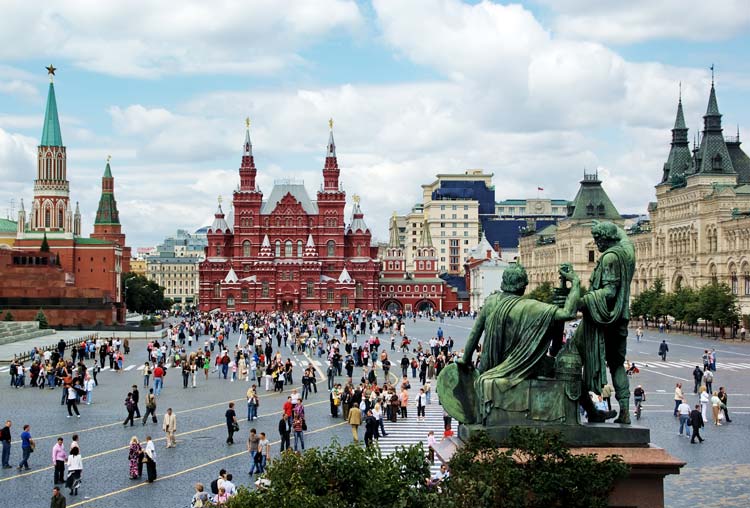
The three train lines from Moscow
When it comes to the Trans-Siberian railway, you get a lot of choice in which way you travel across the time zones. If you’d rather see vast and endless Siberia and unseen communities, you’ve got it, the same way if you’d rather aspects of china that far and few individuals have had the pleasure of seeing, you got it. Here are the main three routes that are popular amongst tourists:
Trans-Mongolian Line
The Trans Mongolian line is the most popular and frequently travelled route by tourists, with its enormous 7,865 km stretch of track, the entirety of the journey takes 6 days, and transports you jet lag free across seven time zones. Travel across dramatically different scenery and landscapes, you’ll adventure through mass industrial regions of Russia, and stopover in some of its lesser known areas and towns, meeting a collection of local people with stories to tell, and a range of different local foods. Escape the industrial regions to discover the Ural Mountains and immensely beautiful alpine mountain scenery, which bears inexplicable beauty and overwhelming evocations of isolation. Experience phenomenal views of Lake Baikal, with its exquisitely colored waters and exotic feel, you’ll appreciate views like these after a long journey of industrial Russia. Discover some of the most incredible and desolate regions of Siberia, and trek through the Gobi Desert in the comfort of a cozy train compartment, all the way to the endless rice fields of rural china, stopping off in areas with only a tiny percentage of inhabitants. Finally, after an eventful 6 days of travelling, you will arrive in the thriving city of Beijing in China; whether this is just the beginning of your journey, or a tearful end, you will undoubtedly have the time of your life upon the Trans Mongolian line, making lifelong friends and memories. The line departs from Moscow once a week, and if you’re not up for the entirety of the journey, you can break down the journey by taking local Russian trains and experiencing some of its lesser known towns and cities.
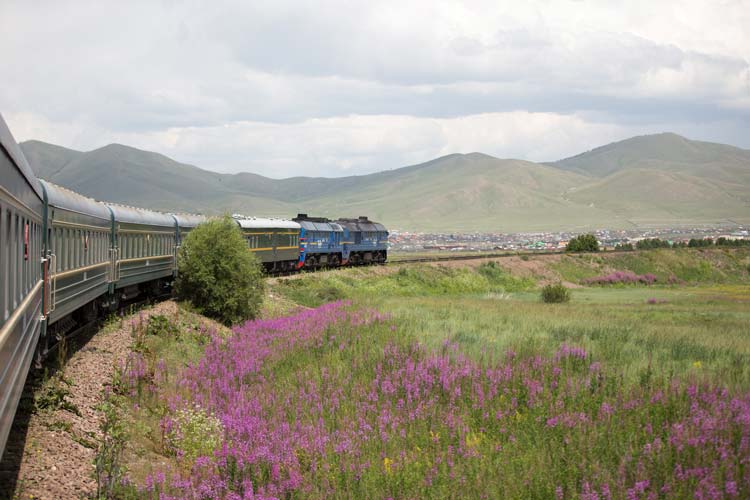 The Trans-Siberian line is in fact the original route, that takes seven days to cross, and cover a massive 9,289 km, travelling from west to east of the country of Russia. With the trams Siberian route, you will be able to see the rural wildness of Siberia, and get a true understanding of how vast and abandoned it really is. Experience Eastern Siberia like no one else in the world has, discovering simply spectacular scenery, and witnessing regions of land with 0% inhabitant rates. Magnificent in both winter and summer, you will surely never miss an amazing time of year to see the flourishing glory of the vast Siberia. In winter, feel as though you’ve been transported to a winter wonderland, with husky dogs galore and pine trees generously decorated in crisp white snow. In summer, you’ll witness lakes that are unbelievably blue, with irresistibly beautiful alpine scenery sheltering it; feel almost a sense of insignificance in the presence of this divine nature. Taking a trip upon the Trans-Siberian line will give you perspective on the impact it would have had in early 20th century Russia, and feel transported back in time, when you realize the amount of people in that era that have ridden the same journey you have. The Trans-Siberian line departs from Moscow every other day, and is Russian train number 2. When you eventually arrive at the east coast of Russia, you can them boat over to Japan, and start a new adventure, fly home, or perhaps fly to the USA to complete an around the world trip; the choices are endless.
The Trans-Siberian line is in fact the original route, that takes seven days to cross, and cover a massive 9,289 km, travelling from west to east of the country of Russia. With the trams Siberian route, you will be able to see the rural wildness of Siberia, and get a true understanding of how vast and abandoned it really is. Experience Eastern Siberia like no one else in the world has, discovering simply spectacular scenery, and witnessing regions of land with 0% inhabitant rates. Magnificent in both winter and summer, you will surely never miss an amazing time of year to see the flourishing glory of the vast Siberia. In winter, feel as though you’ve been transported to a winter wonderland, with husky dogs galore and pine trees generously decorated in crisp white snow. In summer, you’ll witness lakes that are unbelievably blue, with irresistibly beautiful alpine scenery sheltering it; feel almost a sense of insignificance in the presence of this divine nature. Taking a trip upon the Trans-Siberian line will give you perspective on the impact it would have had in early 20th century Russia, and feel transported back in time, when you realize the amount of people in that era that have ridden the same journey you have. The Trans-Siberian line departs from Moscow every other day, and is Russian train number 2. When you eventually arrive at the east coast of Russia, you can them boat over to Japan, and start a new adventure, fly home, or perhaps fly to the USA to complete an around the world trip; the choices are endless.
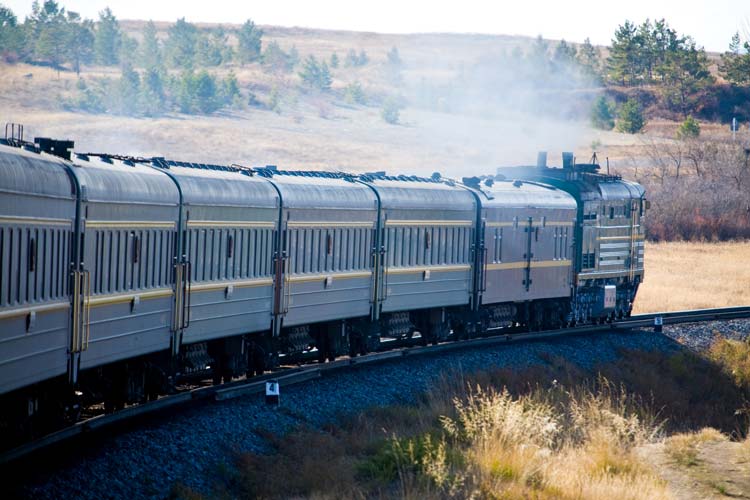
Trans-Manchurian Line
At 9,001 km long, the Trans Manchurian line takes a whole seven days to complete, and travelling from Moscow, through Siberia, Manchuria and finally stopping in Beijing. It’s a shame however, as the Trans Manchurian line is one of the least popular routes with tourists, perhaps because it travels through more industrial regions, which can deter those who desire immense natural views. On this route, you will drive through Da Hinggan Ling Mountains, which boast breathtaking views or soaring high mountains and minute, densely populated villages. You will also stop off for 25 minutes in Chita, a large industrial city in the heart of the Chita region; the population here is 370,000 people, and the area has a lot of history, for instance it is where the Decembrists were sent to exile back in tsarist Russia. This line has been in use since the turn of the 20th century, and has allowed millions of people to travel across the entirety of the Siberian region and begin their adventure in China. The Trans Manchurian line leaves Moscow once a week, and is train 20.
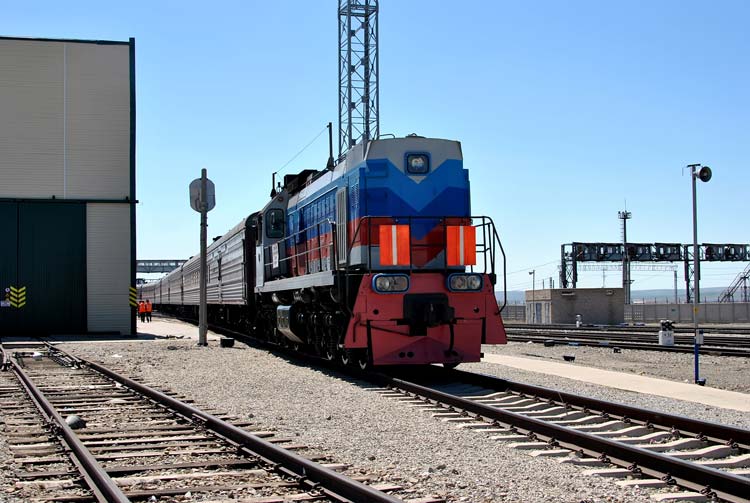
Where will I sleep?
With most of the lines, there are a number of choices of where you can sleep, depending on what you desire and how much you want to pay. The most common form of residence on board is the Kupe, which is a cheap, closed compartment that is also very comfortable considering you’re on a train! The next up is the SV which is the first class accommodation, which has around two compartments, a TV and a wash basin. The Trans Mongolia line has deluxe first class luxury cabins that are a step up from first class, and are similar to hotel rooms – train style. However, if you’re looking for the absolute cheapest option, you’ll have to stay in Platskartny, which is a single bunk amongst other people; it may be a rough night’s sleep but you’ll certainly make friends! One of the biggest complaints of travelers is the lack of sufficient washing facilities, though the situation is steadily improving.

Image: Flickr
What will I eat?
Upon each train, there is a restaurant, where the menu changes in each separate location and also the time of year. Although there is certainly no lack of food, there’s nothing truly appetizing on board the actual train, unless you’re a sucker for dull flavored soups and potato, you’ll have plenty of time to grab some sweet treats at all of the stops, and experience gorgeous local delights. In summer, you’ll discover the juiciest and most flavorsome fruits and pancake combinations.

What time of year should I travel?
The climate changes depending on where you are, obviously, but generally speaking, summer is the best time of year to travel, simply because it is not freezing cold. China is best to visit in the autumn months, as it is exceptionally beautiful, with crisp winds and clear skies, it’d be a shame to miss. Avoid travelling across Siberia in the winter, as it is worryingly freezing; tourists infrequently travel in the colder months, and it is predominately locals. Ultimately, the best time to travel is between April and October.
If you’ve already one of the Trans-Siberian Railway tours, let us know and tell us about your experiences. If you haven’t done it yet, but only dreamt of undertaking one of the described Trans-Siberian Railway tours, now is the time to start planning your trip!



